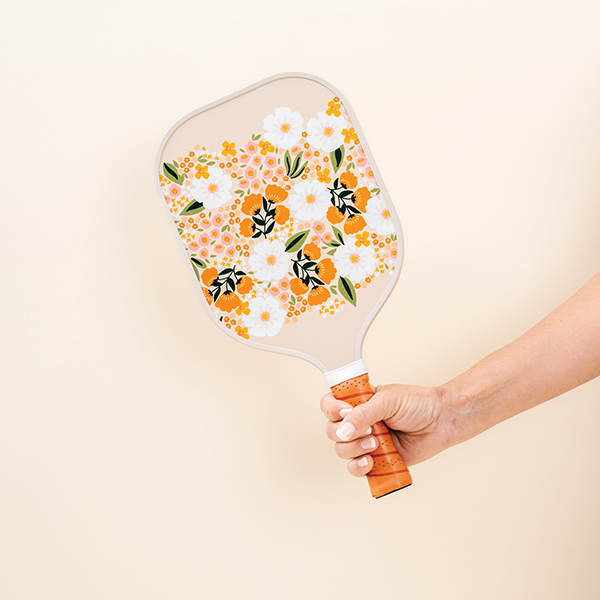Healthy Bottom Line
Show Time
The hospital gift shop segment of the gift retail industry will have something extra special to look forward to at the next Washington Gift Show, according to Cate Salvatore, media manager for George Little Management. The show, scheduled for February 25-28 at the Washington Convention Center, will host Hospital Gift Shop Day for qualified hospital gift shop buyers. The day will include education, networking opportunities and special incentives.
The show will feature nearly 350 exhibitors of giftware, traditional and contemporary crafts, decorative and personal accessories, social stationery, greeting cards, gourmet products and foods, floral and garden accessories, fine and fashion jewelry, books, ethnic artifacts and folk art, ceramics, and more. Some 6,000 retailers are expected to attend.
Hospital Shopping
Unlike with a shopping mall, few people look forward to going to a hospital. Unless it’s for work or to visit a newborn baby, a trip to the infirmary is more associated with pain than with pleasure. It seems an unlikely setting for a thriving retail business, but hospital gift shops are high-volume operations, many of which see annual gross sales of more than $1 million.
While hospital gift shops cater to patients and visitors with flowers, plush items and gifts, many managers and industry professionals interviewed for this feature report that more than 60 percent of a gift shop’s customer base consists of hospital employees. With nonprofit status, a staff of volunteers and a solid and steady flow of customers, a gift shop can be an extremely valuable operation for the hospital it serves.
A captive clientele
One of the unique characteristics of a hospital gift shop is its heavy reliance on the staff of the hospital. The staff is the lifeblood of many shops. Working long shifts and odd hours with hectic schedules, most nurses, physicians and resident interns have little time to do after-hours shopping. Of all the products and services that a hospital gift shop offers, convenience ranks at the top of the list.
“We have a captive audience here. We’re not waiting for the customer to walk down the street and enter our store, such as you would in a strip mall,” says Mary Roberts, manager of Our Lady of Providence League Gift Shop, at Providence Hospital in Southfield, MI.
Roberts notes that some of the same advantages present significant challenges. Since her main customer base passes the shop almost daily, Roberts needs to keep the store looking fresh at all times. She says the shop is especially careful with reorders, and is constantly experimenting with new products and merchandise.
“We can only tap into hot items so many times, then our in-house customer is really looking for something fresh and new,” Roberts says.
Kim Schuler, chief operating officer of Lori’s Gift Shops, says that hospital employees can frequent a gift shop upward of five times a day. With little time to spare, many hospital employees simply don’t have time to leave the premises. While on break, they will often peruse the gift shops.
“Sometimes they don’t purchase anything. Sometimes they are just trying to get away and walk around. We have music to create an ambience,” Schuler says.
Lori’s Gift Shops was founded in 1981 in Carrollton, TX, and has grown to include almost 200 locations in 28 states. Recent years have seen rapid growth; in 2005, Lori’s opened 27 more locations. Lori’s serves as a full-service management company that can create a gift shop from ground up, then run it under the guidance and the name of a hospital. Schuler, who worked a decade for Hallmark before coming to Lori’s, notes strong differences between traditional gift shops and hospital gift shops.
“The biggest difference is that 70 percent of those sales are generated from that hospital employee,” she says. “That person expects a real full-service gift shop. They’re not just looking for gifts. We are their snack shop, we offer drinks, we offer some of the personal care products.”
Merchandising in small spaces
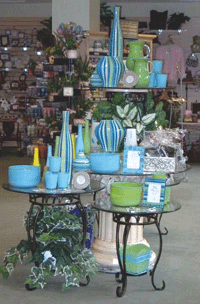 While hospital gift shops can vary dramatically by size, most of them seem to be about 750 square feet. Cindy Jones, a consultant specializing in the design and management of hospital gift shops, says the small size of most shops calls for creativity in design and space allocation. Managers must maximize every square inch of the shop.
While hospital gift shops can vary dramatically by size, most of them seem to be about 750 square feet. Cindy Jones, a consultant specializing in the design and management of hospital gift shops, says the small size of most shops calls for creativity in design and space allocation. Managers must maximize every square inch of the shop.
“Increasing sales is very related to space allocation. Usually gift shops in hospitals are very small, and we’re supposed to make a mini department store out of them. It calls upon creativity, imagination and thinking out of the box on how to display all the merchandise that we feel we should be offering,” says Jones.
Because of limited space, Jones says, it is important to have an updated, clean and clear palette to display merchandise. She helps hospitals and managers plan and configure space, locate merchandise categories, and effectively present merchandise using display fixtures. She notes that care must be taken to strictly adhere to requirements of the Americans with Disabilities Act.
“You’ve got a small spot, but in a hospital—of all places—you want to make sure that it’s a safe environment and that there is room enough for wheelchairs,” Jones says.
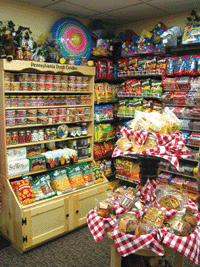 When Lori’s is called to design a gift shop, the company brings in a visual design team and does its work with the demographics of the clientele, the hospital staff and the volunteers in mind. By gathering all the appropriate information, Lori’s can maximize space and, as a result, sales.
When Lori’s is called to design a gift shop, the company brings in a visual design team and does its work with the demographics of the clientele, the hospital staff and the volunteers in mind. By gathering all the appropriate information, Lori’s can maximize space and, as a result, sales.
“We have to incorporate all those segments of the business in one small area. And the average size is about 750 square feet. That can be very challenging,” Schuler says.
Andrew Andoniadis has been working with hospital gift shops for 15 years and is the founder of Andoniadis Retail Services, a Portland, OR-based consulting business for the retail industry. His clients have included the University of Iowa and Children’s Hospital in Seattle. Like Jones, Andoniadis offers review and management services and can assist gift shops at any time. But he says the shops should ideally be designed from the ground up. In many cases, the location of the gift shop within the hospital is an afterthought. While most traditional planners would suggest putting a gift shop near an entrance, Andoniadis says that isn’t always the best place.
“We know that an overwhelming majority of the sales are to staff, that that’s where they all go at least once a day, sometimes two or three times a day,” he says, suggesting that a location closer to the cafeteria, where staff members also frequently spend time, might be better.
Volunteers and nonprofit status
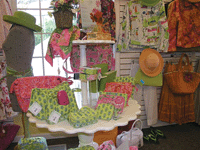 Hospital gift shops rely heavily on the service of volunteers, because almost all are nonprofit enterprises that channel proceeds back to the hospital. Most are run by boards of auxiliary organizations that then appoint paid or volunteer managers to oversee the day-to-day operations.
Hospital gift shops rely heavily on the service of volunteers, because almost all are nonprofit enterprises that channel proceeds back to the hospital. Most are run by boards of auxiliary organizations that then appoint paid or volunteer managers to oversee the day-to-day operations.
Susan Noyes, manager of the Shops at South Shore Hospital in Weymouth, MA, manages three separate gift shops on the hospital grounds. She relies on a staff of two full-time employees, four per diem employees and more than 40 volunteers.
“Our mission is philanthropic. We were established by the Friends of the South Shore Hospital. Their mission is to raise money specifically to go back into patient care. Initially, the shop was run entirely by volunteers. Up until about eight years ago, there was no paid staff,” Noyes says.
“Either I recruit them and they go through the [volunteer] program, or the hospital recruits them directly for my purposes,” Noyes says. “We look for customer service-oriented people that are comfortable being around patients and families.” She also has a few select volunteers who specialize in office duties like data entry and purchasing.
South Shore’s gift shops used to have an older volunteer staff, but Noyes says she has been trying to make the staff more diverse. Her volunteers now range in age from 17 to 80.
Many traditional gift shop managers might wonder about the reliability and motivation of unpaid employees. At Providence Hospital, manager Mary Roberts says that respect, education and appreciation are the keys to successfully managing volunteers.
“It has a lot to do with attitude and treating them with respect. Getting them excited about the new merchandise. If they are educated in the industry and treated with respect and dignity, I think that really motivates them. You also really have to show your appreciation by thanking them—that goes a long way in motivating them,” Roberts says.
Consultant Cindy Jones says that because of their nonprofit status, hospital gift shops must be careful about their marketing and advertising strategies. She says that—because of IRS rules and regulations—rarely can a gift shop advertise outside of the hospital. They place an occasional ad, framed around hospital patients’ beds, that explicitly states that proceeds go toward supporting the hospital.
“It all has to be designed around the patient,” Jones says. In lieu of mass advertising, many hospital gift shops entice customers with rewards programs. Lori’s Gift Shops locations have an especially attractive customer rewards and discount program that includes frequent shopper cards. Once a customer spends $200, they receive a $20 gift certificate.
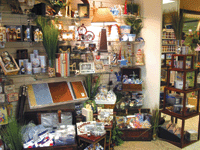 Because so many of their clients come from inside the hospital, most gift shops would have little motivation to place outside advertising anyway. Marketing is often done through employee email, hospital newsletters and publications that are strictly for employees and patients. Many hospital gift shops also offer employee payroll deductions (where the cost of store purchases can be deducted from a paycheck) and this encourages greater sales.
Because so many of their clients come from inside the hospital, most gift shops would have little motivation to place outside advertising anyway. Marketing is often done through employee email, hospital newsletters and publications that are strictly for employees and patients. Many hospital gift shops also offer employee payroll deductions (where the cost of store purchases can be deducted from a paycheck) and this encourages greater sales.
At South Shore Hospital, Noyes appeals to on-site customers with special events at each of the three locations. These include seasonal sales, birthday discounts, Christmas in July and programs that allow vendors from outside the hospital to sell merchandise in the shop. Portions of the proceeds are then handed over to the hospital.
“It’s a nice way to drive business to the shop, and we get additional revenue just from them being there. Last year, it drove in an additional $25,000,” Noyes says.
Mini department stores
 While hospital gift shops also cater to visitors and patients, the focus on hospital staff and employees creates a need for a diversity of merchandise that might be more on par with a drugstore’s. Besides flowers and cards, products for sale often include snacks, drinks, pantyhose, razors, deodorant, umbrellas, reading glasses and stamps.
While hospital gift shops also cater to visitors and patients, the focus on hospital staff and employees creates a need for a diversity of merchandise that might be more on par with a drugstore’s. Besides flowers and cards, products for sale often include snacks, drinks, pantyhose, razors, deodorant, umbrellas, reading glasses and stamps.
“That customer [the hospital employee] generates the most revenue,” Noyes says. “We also provide a service to them that they need. A lot of them are working a lot of hours, are under a lot of stress and can’t leave the campus to go anywhere else to shop.” Noyes says this is particularly noticeable during the holidays. Merchandise is rotated to include variable selections of holiday gifts, and Noyes opens earlier and closes later to accommodate what she calls “our most important customer.”
Schuler says that by bringing in more items, gift shops have a greater opportunity to capture dollars. Some of Lori’s shops change clothing on a weekly basis. Items that have been popular recently include handbags and Crocs shoes. Lori’s gift-buying team travels to markets all over the country and is always seeking ways to capitalize on the business’s customer base. For overworked hospital personnel, it often comes down to convenience. Lori’s emphasis on compartmentalization creates locations that are part snack bar, part traditional shop and part high-end boutique. Schuler says average annual sales at a Lori’s Gift Shop total approximately $300,000.
 “If a gift shop is meeting the needs of the employees, it will generally meet the needs of patients and visitors, with a few exceptions. That would be things like mirrors, rubber balls for hand therapy, backscratchers for those with casts, magic slates for those who can’t speak and turbans and caps for chemo patients,” Jones says.
“If a gift shop is meeting the needs of the employees, it will generally meet the needs of patients and visitors, with a few exceptions. That would be things like mirrors, rubber balls for hand therapy, backscratchers for those with casts, magic slates for those who can’t speak and turbans and caps for chemo patients,” Jones says.
The merchandise for visitors is highly predictable—flowers, cards and plush items to cheer up sick patients. While the majority of their business comes from walk-in customers, most hospital gift shops take orders over the phone and via the Internet. Noyes says her stores receive 10 to 15 calls a day from people who learned about the stores over the Internet.
“We get a lot of calls and just fill orders over the phone. A typical order is a bouquet of flowers, but we create all kinds of packages that they can have sent up to someone’s room,” Noyes says.
Healthy bottom line
While hospital gift shops are generally small enterprises, most have considerable merchandise turnover and make healthy revenues. Low expenses, high sales volumes, and an ever-present, loyal clientele often mean high profitability for the hospitals. Andoniadis says that—if managed properly and professionally—hospital gift shops have the potential to bring in significant revenue.
“First of all, the financial structure is completely different [from most traditional gift shops’.] Rarely do they pay for rent or utilities, and they often have no paid staff. As a result, they can be tremendously profitable. A lot can come down to the bottom line,” he says.



















